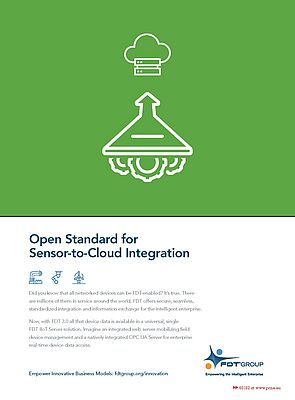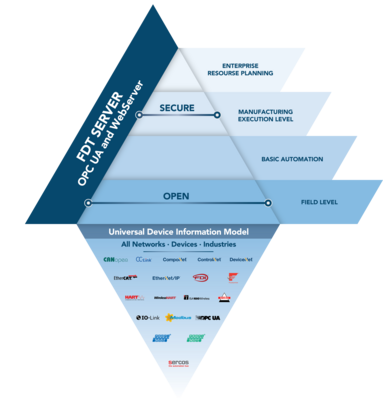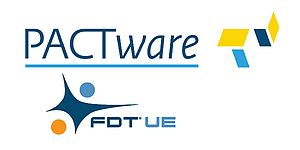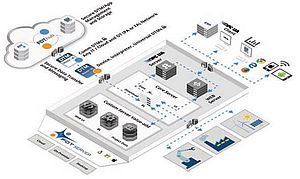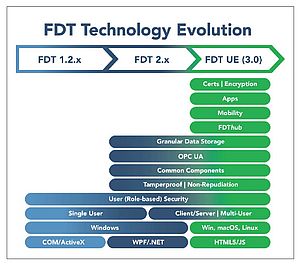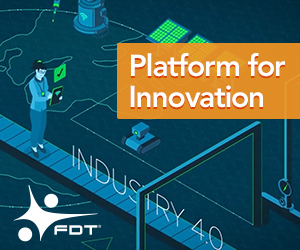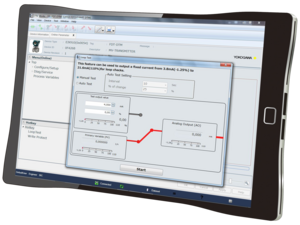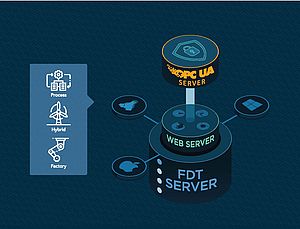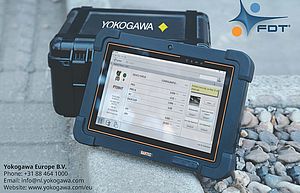Industrial manufacturing operations are in the early phase of the Fourth Industrial Revolution. This era will be driven not just by data, but also by the intelligence that can be derived from it and applied across the operational landscape of equipment, processes, facilities, and people. Integrating OT and IT systems is an important first step along the path.
By unifying OT and IT systems and practices in a converged system architecture, businesses can eliminate inefficiencies and barriers to interoperability, improve automation, and accelerate innovation.
FDT’S ROLE IN UNIFYING DATA VISUALIZATION
FDT® technology has long been recognized as a key solution for industrial data integration and interoperability. The recently released FDT 3.0 standard is a completely platform-independent, single-server, cloud-based solution offering the freedom to use innovation to support new and existing manufacturing infrastructure through a smart, connected ecosystem of integrated machines and devices. It is focused on IT/OT integration and interoperability, harmonizing technologies, solutions, and people for today’s infrastructure and tomorrow’s intelligent enterprise. FDT 3.0 leverages the power of OPC UA to unify IT/OT data access and visualization for the process, hybrid, and discrete manufacturing markets in an open, standardized, and non-proprietary manner. Its server-based distributed architecture employs a built-in, “pre-wired” OPC UA Server to seamlessly allow access to all device and network information and metadata via any authenticated OPC UA Client or application.
ENABLING AN OPEN, INTEROPERABLE ARCHITECTURE
With the FDT 3.0 distributed architecture, automation end users benefit from utmost interoperability — they can freely mix and match any device with any device information businessmodel, from any vendor, and communicate on any network while the FDT Server transparently unifies all the device information and pushes the data to the enterprise for any OPC UA Client. In addition, FDT 3.0’s optional support for a Publish-Subscribe (Pub-Sub) communication environment allows for efficient, real-time data monitoring and exchange.
FDT Group and OPC Foundation recently updated their collaborative OPC UA companion specification, which merges the IT and OT domains within a universal, server-level Device Information (DI) model and unifies FDT’s strength as the standardized, protocol-agnostic, data-centric IIoT platform serving uniform IT/OT device-data to the enterprise.
With FDT 3.0, vendors can expose customized parameters of their choosing through FDT’s versatile Device Type Manager™ (DTM™) interface. FDT 3.0 DTMs are out-of-the- box OPC UA capable; the DTMs auto-enable OPC UA integration with no additional coding required.
CONCLUSION
Data visualization capabilities with FDT 3.0 technology are closely aligned with the requirements of major end user associations and their recommendations for an open, interoperable automation architecture. Collaborative efforts supporting new FDT 3.0 architectures are another example of technologies, solutions, and people working together to help achieve a brighter future in industrial manufacturing.


